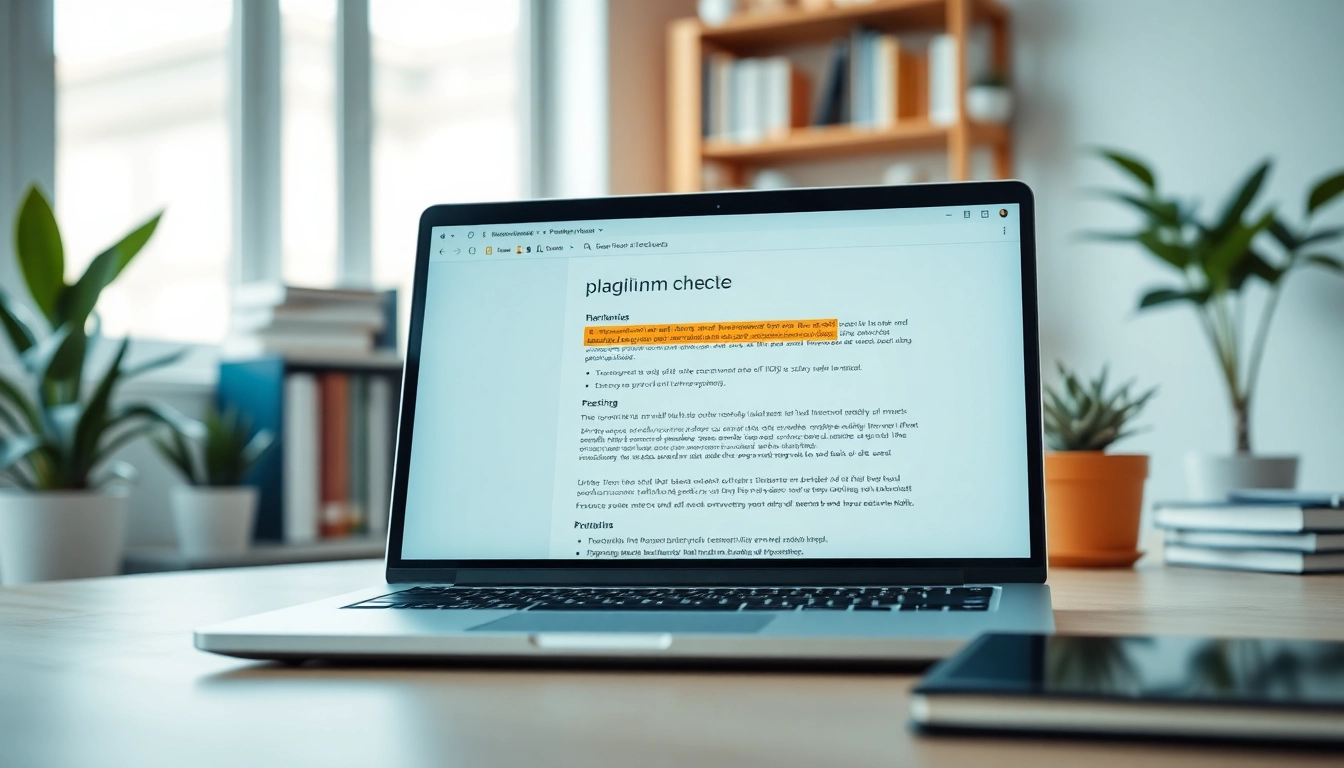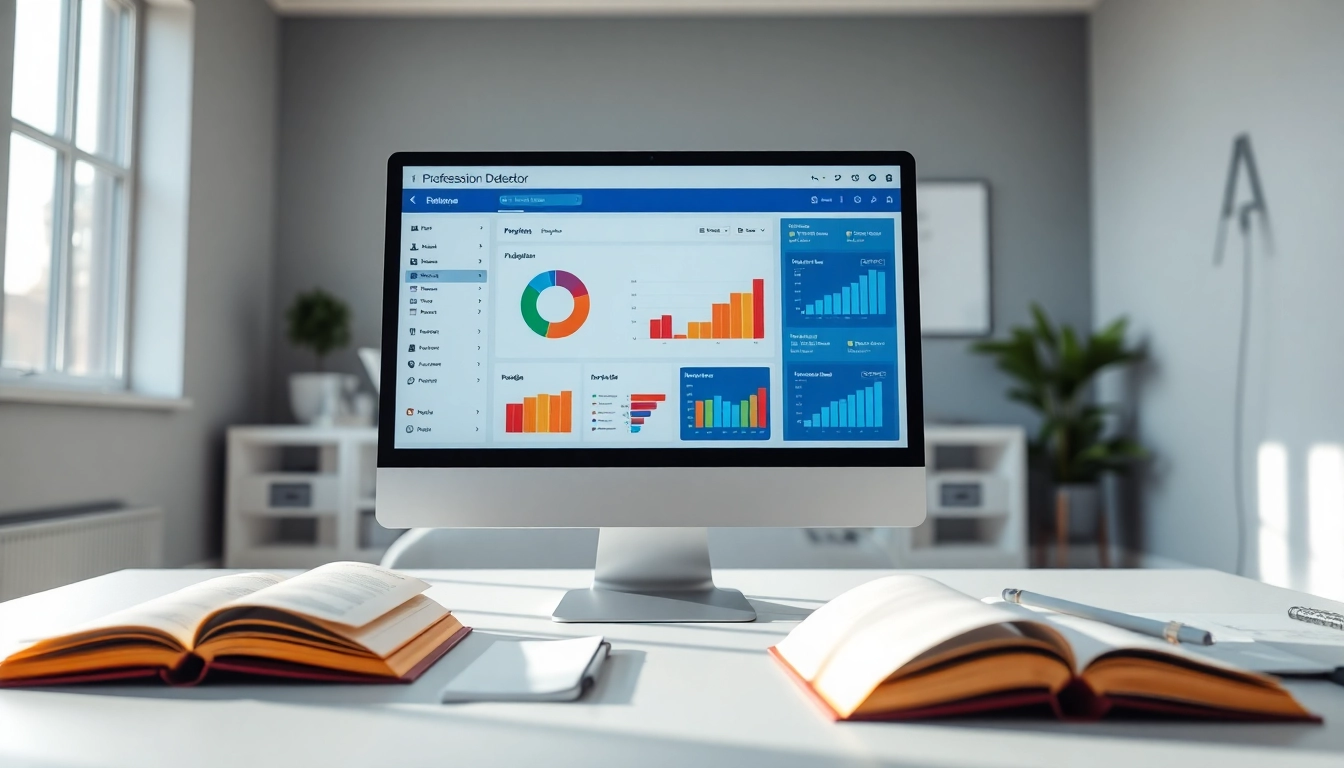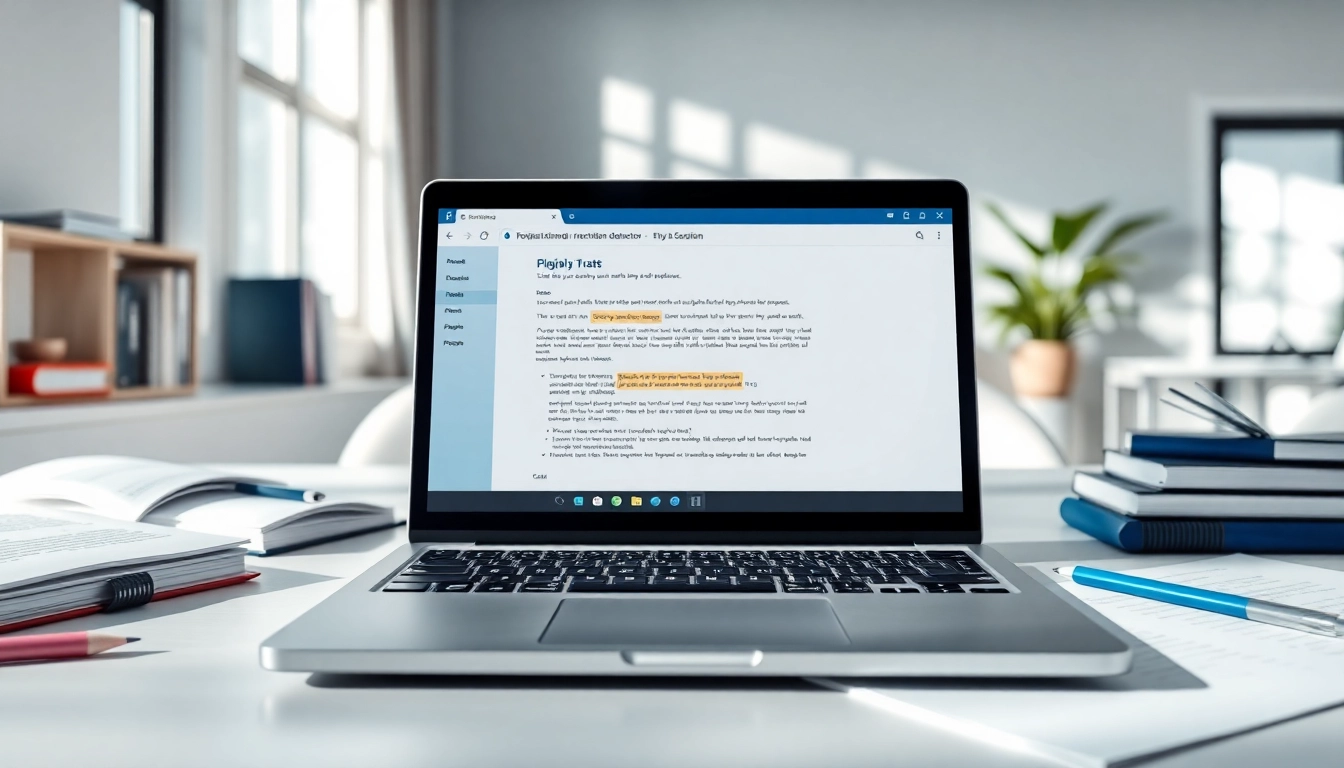Understanding Plagiarism Checkers
As academic integrity becomes increasingly vital in educational environments, the importance of a plagiarism checker cannot be overstated. These tools help both students and professionals ensure that their work is original and respects intellectual property rights. A plagiarism checker is essential for anyone engaging in writing, research, or publishing, as it verifies the authenticity and originality of content, assisting in the fight against plagiarism.
What is a Plagiarism Checker?
A plagiarism checker is a tool that scans texts to identify content that matches existing material in various databases, including online resources, academic journals, and previous works. These checkers can help detect instances of copied content, whether intentional or accidental. By comparing written work against a vast repository of sources, these tools generate a report that highlights similarities, thus allowing users to make necessary edits to maintain originality.
How Plagiarism Checkers Work
Generally, plagiarism checkers utilize algorithms to perform text comparisons. When a document is uploaded, the software analyzes the text and compares it to existing sources online and in specific databases. The process typically includes:
- Text Extraction: The tool extracts the text from the submitted document.
- Database Comparison: The extracted text is compared against various datasets containing published works.
- Similarity Detection: The software identifies similarities, providing a percentage of originality and flagging specific sections that match existing content.
- Report Generation: A detailed report is generated, showcasing matched excerpts, sources, and the overall plagiarism score.
Common Types of Plagiarism Detected
Plagiarism checkers are designed to detect various forms of plagiarism, including:
- Direct Plagiarism: Copying text verbatim without attribution.
- Self-Plagiarism: Reusing one’s own previously published work without citation.
- Paraphrasing: Rewriting someone else’s ideas or work without proper credit.
- Patchwork Plagiarism: Combining copied phrases from different sources into a new work.
- Accidental Plagiarism: Unintentionally failing to cite sources correctly, leading to the misrepresentation of original ideas.
Benefits of Using a Plagiarism Checker
Enhancing Academic Integrity
Academic integrity is central to educational success. By using a plagiarism checker, students and researchers uphold ethical standards, avoiding potential consequences that arise from submitting plagiarized work. Institutions often have strict guidelines against plagiarism, and the use of these checkers demonstrates a commitment to honesty and originality.
Improving Writing Quality
Innovative plagiarism checker tools often provide detailed insights not only about duplicated content but also on writing style and coherence. By identifying areas that require citation or revision, these tools guide users toward enhanced writing quality. Furthermore, they provide suggestions on how to properly paraphrase or cite sources, ultimately making the writing process more educational and effective.
Saving Time in Research and Writing
Research and writing can be a time-consuming process, and ensuring content originality is vital. Utilizing a plagiarism checker saves time by streamlining the revision process. Instead of manually searching for duplicate content or relying solely on memory for citations, writers can focus on creating compelling arguments while the tool handles the tedious task of ensuring originality.
How to Choose the Right Plagiarism Checker
Features to Look For
When selecting a plagiarism checker, several features can enhance the user experience and reliability of results:
- Database Size: A larger database increases the likelihood of identifying potential matches.
- Real-Time Checking: Tools that provide immediate feedback allow for adjustments during the writing process.
- Detailed Reporting: Comprehensive reports that outline identified matches and provide constructive feedback are invaluable for learning and improvement.
- Integration Capabilities: Compatibility with word processors and cloud services can streamline workflow.
Free vs. Paid Options
The market offers both free and paid plagiarism checkers. Free versions can be effective for casual use or light checks, but they may lack extensive databases or advanced features found in paid options. For serious academic use or professional publishing, investing in a premium service can be worthwhile as these often guarantee more accurate detection alongside a wealth of additional tools and functionalities.
User Reviews and Reliability
Understanding how well a plagiarism checker performs can be gauged through user reviews and testimonials. It’s essential to rely on tools recognized by educational institutions and professionals. Gathering insights from other users regarding experiences can help narrow down suitable options and avoid products that compromise on quality.
Integrating a Plagiarism Checker into Your Writing Process
Best Practices for Using a Plagiarism Checker
To maximize the effectiveness of plagiarism checkers, consider the following best practices:
- Always Check Before Submission: Utilize the plagiarism checker after completing your work but before submission to ensure the highest original content quality.
- Review Matched Sources: Examine matched content to understand how to rephrase or properly cite it rather than merely removing suspicious sections.
- Be Proactive: Check early drafts to identify potential issues, allowing for adjustments during the writing process rather than at the end.
Getting the Most Accurate Results
For the best outcomes, it is crucial to follow the instructions provided by the plagiarism checking software. Ensure the document is formatted correctly and free from unusual characters that could affect text recognition. Additionally, running multiple checks with different tools can help confirm results, ensuring thoroughness and accuracy.
Real-Time Editing and Feedback
Some advanced plagiarism checkers offer real-time editing features. Integrating plagiarism checks into writing applications allows for on-the-spot suggestions as content is created. This functionality can significantly enhance writing proficiency over time, serving as a continual learning opportunity.
Future Trends in Plagiarism Detection Technology
AI and Machine Learning Impacts
The future of plagiarism detection is likely to be heavily influenced by advancements in artificial intelligence and machine learning. These technologies will enable plagiarism detectors to become more sophisticated, accurately identifying subtle forms of plagiarism and contextualizing copied material within their analyses. This is crucial as plagiarism evolves in nature, requiring tools to adapt to increasingly complex patterns of content usage.
Innovative Features on the Horizon
As technology progresses, we can anticipate the emergence of innovative features such as voice recognition for transcribing spoken words, integration with educational platforms for direct instruction on proper citation styles, and even augmented reality tools that visually highlight copied sections in real-time as a user writes.
The Growing Need for Advanced Plagiarism Checkers
The rise of digital content consumption accelerates the need for advanced plagiarism checkers. Millions of articles, research papers, and online materials are generated daily, necessitating robust tools that can keep pace with the volume. Scholars and educators will increasingly rely on these tools to uphold academic standards and ensure content originality in an oversaturated digital landscape.




